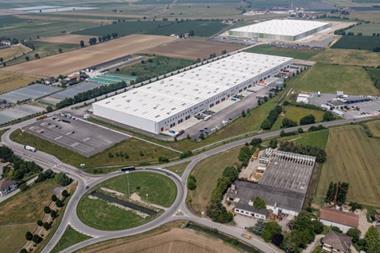FIDAC joins the European affray, as the sale-and-leaseback market heads for its biggest shake-up to date, Shayla Walmsley reports.
The European sale-and-leaseback market has another player. This week, FIDAC, the UK-based subsidiary of US REIT Annaly Capital Management, announced that it has hired Northcliffe's entire management team for a planned pan-European sale-and-leaseback surge. Citing a potential $4trn (€2.9trn) market, Northcliffe managing partner Alistair Calvert announced the imminent "largest expansion of sale-and-leaseback finance in Europe ever seen".
FIDAC's timing is either very good, pretty bad or both, depending on how you look at it. In recent years, the market has been burgeoning on both the demand and supply sides. There's barely a supermarket left in Europe that hasn't sold its property assets to a willing investor, often a pension fund - and that's before you start on the hotels (Premier Inn), the leisure companies (Virgin Active) and the healthcare assets (General Healthcare Group).
Varma, the €4bn Finnish pensions provider, is one of the supermarket dealsters. Grosvenor, the UK partner to sovereign wealth funds and US public pension funds, is another, last month acquiring a Paris Monoprix supermarket in a €26m deal. WP Carey, one of the largest specialist players, recently acquired 20 stores belonging to Italian supermarket chain Metro for €300m.
"The approach is different when you're dealing with retail assets than when you're dealing with office or industrial assets," said WP Carey managing director Jeff Lefleur. "If things go bad for the retailer, owning one of 10,000 stores is not a good place to be in. But these are higher-quality assets with potentially more uses than a big-box warehouse."
So there's plenty of appetite on both sides. For occupiers, sale-and-leaseback deals offer a source of capital when few others are available. The sale of Tesco's property assets has netted it £1.3bn over the past five years - proceeds it used, among other things, to acquire property assets in growth economies. The supermarket chain will target returns of £250m-350m annually from its property portfolio for the foreseeable future, broadly equivalent to the return on its development activities, via the annual divestment of UK property worth £1bn.
For investors, it's an alternative to gilts as a hedge for long-term inflation risk. "If you're selective in the properties you invest in - the right assets in the right locations - over the long term, capital values will move somewhat in line with inflation," said Ben Jones, manager of the M&G Secured Property Income fund. M&G has invested £500m in the sector over the past couple of years and around £3bn over the past decade.
Investors are getting choosier. Rockspring, for example, will only invest in mainstream assets and hired Bain & Co to produce a background report on the operations of Spanish food retailer Eroski for two transactions. "You always do due diligence on the tenant as well as the asset, especially on their operational strength," said Rockspring head of transactions Jo de Clercq. "You have to understand what you're buying and what the tenant is doing."
The trouble is yet to come within an expanding market. Public-sector sale-and-leaseback deals could become scarce as owning becomes cheaper than leasing, just as the option was beginning to take off. Spanish private equity firm Eurostate in September was providing junior debt for a sale-and-leaseback deal on 26 office assets worth €450m sold by the Catalan regional government with a minimum 25-year lease.
More significantly, a change agreed in August 2010 between accounting standards boards in the US and Europe will change how companies report real estate assets. Assets previously classified as operational will in future appear alongside financial assets on the balance sheet. Although it is not yet clear how or when the change will happen, the best guess is sometime around 2015.
The new rules could make a hefty difference to the attractiveness of sale-and-leaseback deals. "It's a bit of a disaster from the occupier's point of view," said Doug Jones, director at DTZ. "The higher the rent and the longer the lease, the bigger the problem."
Yet the fundamental corporate rationale for sale-and-leaseback - to take capital out of real estate assets and put it to work where it will generate a higher return - is still there. According to Lefleur, the market will slow, but demand for financing will increase toward the end of 2011 and 2012 as capital markets become more constrained. "It'll be interesting to see which is the stronger factor," he said.
Doug Jones reckons corporates would "think twice" after the accounting change - they will, that is, unless they need cash they can't get elsewhere. As de Clercq pointed out, this is effectively a countercyclical market, flourishing most when credit is scarce. "Eroski would never have sold the assets five years ago when the economy was booming - and certainly not at that price," he said.


















